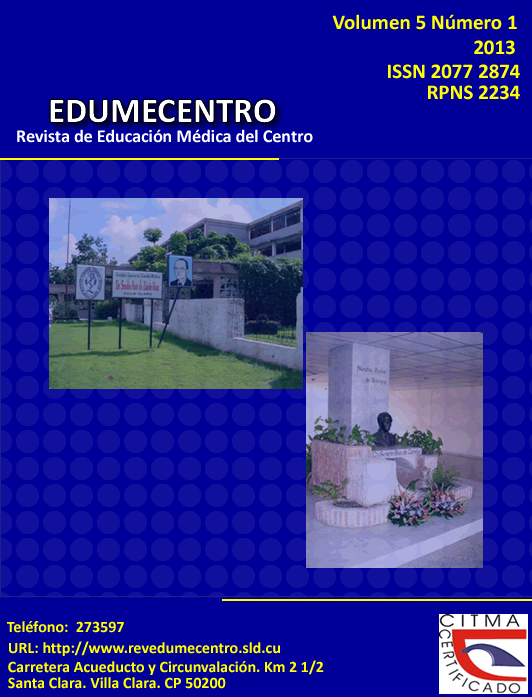Guiding reflections about the special Didactics in the clinical subjects
Keywords:
Medical education, Didactics, Special Didactics, methodologies, clinics, clinical method, curriculum, subject, teaching, learning, professor.Abstract
The objective of this work is to describe the distinctive features of the teaching-learning process of the clinical subjects. Empirical methods were used (review of documents) and theoretical methods (analysis-synthesis, induction-deduction and structural- systemic). The outcomes are presented in items. It was carried out a characterization of the personal and the process components of the teaching-learning process of these subjects; supported by the foundations of the curricular theory. The special didactics of the clinics implies the application of principles and concepts of the general didactics, to the real conditions where the medical cares occur, and the transformation of the student´s personality occurs during the interaction with the ill people. A correct preparation is required on the part of the professors as well as the presence of a good methodological work which encourages carrying out research works in this field, to contribute to a greater development of the Cuban medical education.Downloads
Download data is not yet available.
Published
2013-02-19
How to Cite
1.
Díaz Velis Martínez E, Ramos Ramirez R. Guiding reflections about the special Didactics in the clinical subjects. EDUMEC [Internet]. 2013 Feb. 19 [cited 2025 Oct. 13];5(1):30-46. Available from: https://revedumecentro.sld.cu/index.php/edumc/article/view/208
Issue
Section
ARTÍCULO ORIGINAL
License
Los autores que publican en esta revista están de acuerdo con los siguientes términos:- Los autores/as conservarán sus derechos de autor y ceden a la revista el derecho de primera publicación de su obra, el cuál estará simultáneamente sujeto a una Licencia Creative Commons Reconocimiento-NoComercial-CompartirIgual 4.0 Internacional (CC BY-NC-SA 4.0) que permite a terceros compartir la obra siempre que se indique su autor y su primera publicación esta revista.
- Los autores pueden establecer por separado acuerdos adicionales para la distribución no exclusiva de la versión de la obra publicada en la revista (por ejemplo, situarlo en un repositorio institucional o publicarlo en un libro), con un reconocimiento de su publicación inicial en esta revista.
- Se permite y se anima a los autores a difundir sus trabajos electrónicamente (por ejemplo, en repositorios institucionales o en su propio sitio web) antes y durante el proceso de envío, ya que puede dar lugar a intercambios productivos, así como a una citación más temprana y mayor de los trabajos publicados (Véase The Effect of Open Access) (en inglés).







